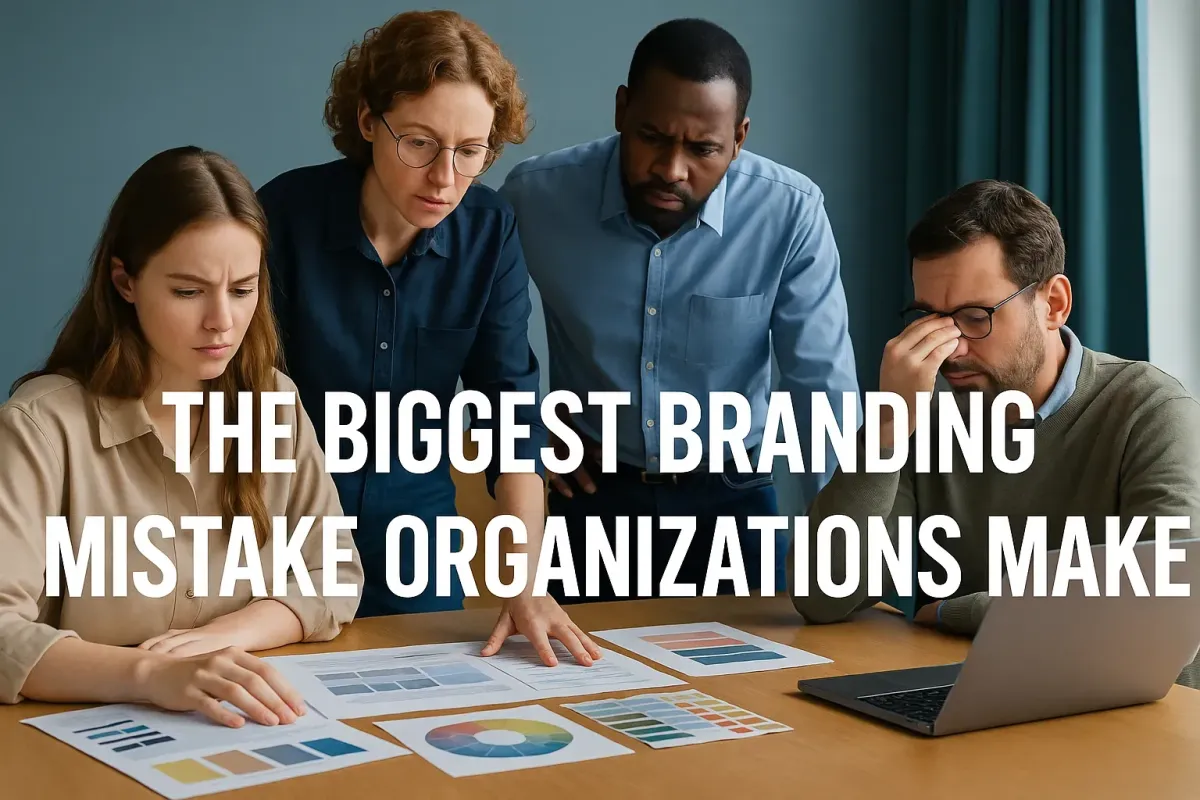
The Big Branding Mistake - And How To Avoid It
Rebranding is a heavy lift. It’s months of work. It takes cross-functional input, executive buy-in, tough conversations, and dozens of decisions that are debated and refined before landing in a final, cohesive direction. Your branding partner has immersed itself in the challenge, weighing every curve of the logo, every color swatch, every sentence in the positioning statement.
Eventually, the work is approved. The brand guide is handed off. There’s a wave of excitement.
And that’s when things start to go sideways.
Where Things Fall Apart
Internal teams have good intentions. They’re eager to bring the new brand to life. They start updating materials, rolling out the new visuals, tweaking messaging. But even the most talented internal creatives don’t always have the full picture.
Maybe they were invited to a few workshops. Maybe they joined the presentation when the brand was unveiled. But they haven’t lived with the decisions the way the branding firm has. They haven’t debated the difference between two near-identical typefaces. They haven’t seen the five directions that didn’t make the cut, or the rationale behind the one that did.
They’ve been given a powerful tool but not necessarily the understanding that makes that tool effective.
And that’s when inconsistencies start to creep in. One piece of collateral doesn’t match the tone of the next. The layout on that internal deck feels like a distant cousin of the website, but not quite family. Slowly, quietly, the clarity of the brand begins to erode.
Let’s be clear: this isn’t a capability issue. Internal teams are often incredibly skilled. But no one expects a surgeon to start operating after a two-hour lecture. Accountants don’t submit financials after a single software demo. It’s NOT about ABILITY. It’s about CONTEXT.
It’s Not Just a Marketing Problem
There’s another layer here. One that too often gets overlooked.
Too many organizations see branding as a marketing function. But branding isn’t just a set of visuals or a tone of voice. It’s the external expression of your value proposition. And that has to go deeper than marketing.
Take Disney. Their brand shows up in the behavior of every cast member sweeping popcorn off a sidewalk. Or Chick-fil-A, where brand is in the phrasing of “My pleasure” and the way problems get solved quickly and personally. That’s not marketing. That’s operational branding. That’s leadership.
In great organizations, brand isn’t something the marketing team manages. It’s something the executive team leads. It’s something everyone in the organization owns.
Without that ownership, the brand starts to lose meaning. And the investment you just made to sharpen your message and align your identity starts to fade.
So What Should Organizations Do?
There’s a better way to ensure your brand doesn’t just launch, but lasts. Here are three things every organization should plan for as soon as the brand work is “done.”
Build Out Examples
Don’t stop at a standards guide. Task the agency partner with creating a set of foundational assets that show the brand in action. A homepage. A capabilities brochure. A proposal template. An internal deck. These aren’t just deliverables — they’re proof points. They give your internal team a clear picture of how the brand comes to life in the real world.
It’s a modest investment, and it sets the tone for consistency and confidence moving forward.Transfer the Understanding
Don’t just hand off files. Transfer ownership.
A good branding partner should stay involved, helping your internal team understand the thinking behind the brand. That might mean leading training sessions, reviewing early executions, or staying on call for quarterly reviews. The truth is, most organizations don’t truly understand the impact of their brand update until about twelve months in. The potential of this impact is a reflection of the intensity of your commitment to the identity you originally approved.
To do this, you really need a partner who knows the backstory. Someone who can help make thoughtful adjustments without unraveling the strategy.Make a Plan to Live the Brand
This part belongs to leadership. A brand that only lives in the marketing department isn’t a brand — it’s a campaign.
Leaders need to think intentionally about how the brand shows up in sales, operations, customer service, HR, even accounting. What does it mean to live the brand in how you onboard new employees? How you handle complaints? How you answer the phone?
You have to define the behaviors and expectations that support the brand — and then model them. Otherwise, it becomes something people reference but never embody.
Final Thought
A brand launch isn’t a finish line. It’s the starting point for something bigger.
It’s a new way of aligning your message, your people, and your purpose. But that only works if you carry the brand through to every corner of your organization. If you let it gather dust or live only on the website, it loses its power.
So take the time. Equip your team. Keep your partner close. And lead from the top.
Because when everyone understands and owns the brand, it becomes more than a tool. It becomes your advantage.
